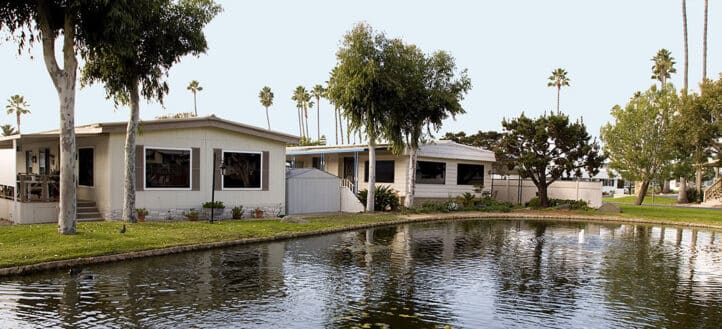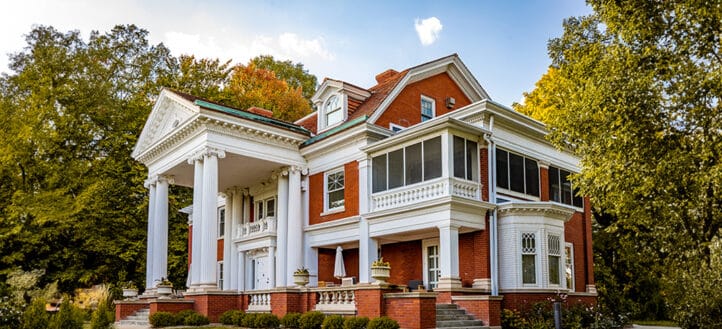Stellar dwellings
Today’s upgraded student housing

For decades, the student housing experience was a predictable one. Freshmen, for the most part, lived in on-campus dormitories with a roommate; sophomores and upperclassmen had the increased options of off-campus residences—two-flats, smaller rental houses, apartment complexes with few amenities—or sorority or fraternity houses, for some. While these are still options, many of today’s university students also have choices that offer additional comforts and conveniences.
“Modern student housing is dramatically newer, nicer, safer and better run,” says Robert Bronstein, president of the Chicago-based Scion Group. “Our buildings look like modern Class A apartment buildings.”
The largest privately held owner-operator of student housing communities in North America, the Scion Group has a portfolio of 86 communities with 55,000 bedrooms on 54 campuses. Almost all of the Scion Group’s communities are located near large public institutions of higher education, such as University of Florida, University of Georgia and Purdue University in Indiana.
The biggest building in the Scion Group portfolio has around 1,500 bedrooms, and most of the others have at least 300. The average is 650.
Amenities reign supreme
Many of these communities offer amenities like furnished units, access card swipes, elevators and even 24/7 doormen. The list continues with pools, gyms, upscale common areas, sizable outdoor terraces and large-screen TVs. Renters pay by the bedroom, free of the responsibility of finding roommates or paying the price of empty bedrooms. Parents, many of whom are guarantors, like the updated safety offerings.
While renters might pay a premium for the amenities, Bronstein says it is well worth the price tag. “For better or worse, the cost of getting a degree is higher. So when people look at the relative cost of nice housing, it offers a lot of value and flexibility.”
Demand for more
The popularity of these communities began growing in the early 2000s when increased university enrollment demanded better housing options. In 2000, 13.2 million undergraduate students enrolled in degree-granting postsecondary institutions. By the fall of 2019, that number had reached 16.9 million, according to the National Center for Education Statistics.
Bronstein and his brother, Eric, began developing these modern student housing communities in 1999 after experimenting with purpose-built housing and forecasting for increased demand.
Investment interest in this housing option has also climbed. According to data by Knight Frank, global investment into purpose-built student accommodation reached a record $16.3 billion in 2018.
Bronstein predicts this interest will only increase. “Student housing is an industry that had had zero innovation in the last 70 years. This is 100% the housing of the future.”
Residing in a pandemic
Along with providing desirable amenities and answering a need for a growing student population, the spread of COVID-19 has given modern student housing another opportunity to prove its value. When schools began shutting the doors of the university-run student housing, Bronstein says that the Scion Group signed hundreds of leases within a few weeks. He notes that the modern communities have adapted to the pandemic with actions like closing common areas and bumping up the frequency of cleaning schedules.
They also were in a good position to facilitate contact-free leases, as they had already been closing approximately 75% of leases electronically before the pandemic. Bronstein expects electronic lease signing to reach 90% soon.
Neighborly ways
Without a university or college, there would be no student housing, so this is a relationship that enterprises like the Scion Group do not take lightly.
“It’s a symbiotic relationship,” Bronstein says. “We try to be a good neighbor to them because if something negative were to happen, it falls on their doorstep as well.”
As for the universities, Bronstein says he believes they recognize the benefits of having these high-quality communities near campus. Because of these additional housing options, universities are able to close down functionally obsolete residence halls from the ’50s or ’60s and be more selective about who lives on campus, he says.
“Many large public schools house first-time freshmen and a few other select populations, and they are happy to have students who do not fit those categories live off-campus in safe, high-quality housing,” he says.
In some cases, the Scion Group has master-leased space to the university or college if it needs to expand for, say, a group of athletes or international students.
Property management amplified
Property managers need to have the same skillset as multifamily property managers, but perhaps with some additional twists. They must be prepared to have close relationships with not only students—who might be adjusting to living on their own for the first time—but also their parents.
“Students may not know how to pay bills, how to work the thermostat or how to request maintenance,” Bronstein says. “It’s definitely more intense. We’ve had managers who have said, ‘I’m going back to regular multifamily.’”
One of the biggest challenges for a student housing property manager is facing a 70% turnover rate year after year, as many leases begin and end with the academic year.
Comprising about 95% students, the renters in these communities are generally responsible and take care of the property.
“Our customer tends to skew 55–60% female, and we have a lot of international students who are looking for a furnished apartment with utilities and are not necessarily looking for roommates,” he says. “Many parents are the guarantors. We’re getting a student who’s looking for a nicer place, and they treat it that way.”
A glimpse into the future
Not only does Bronstein believe these communities will be the future of student housing, he thinks the popularity of this housing type is indicative of the path for other multifamily housing. Some multifamily properties have taken note and begun adding amenities like more vibrant common areas, furnished units and included utilities.
“If someone wants to know what multifamily housing is going to look like in five or 10 years, look at student housing,” he suggests. “As we’ve had more dialogue with the largest multifamily owners, they’ve recognized that our renters today are their renters in a year or two.”
Similar Posts
Property spotlight
Be our guest
Ball State University property management students help med students settle...
Property spotlight
Condo conundrums
Managers of condominium buildings will continue to face many challenges...




